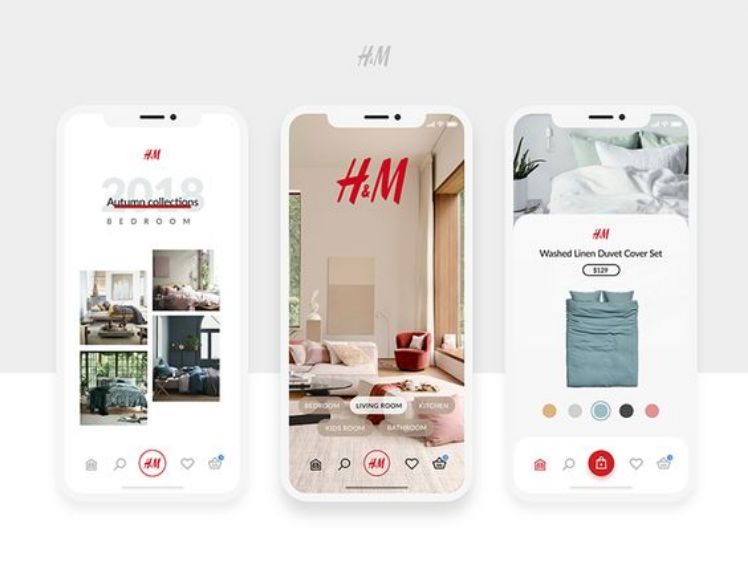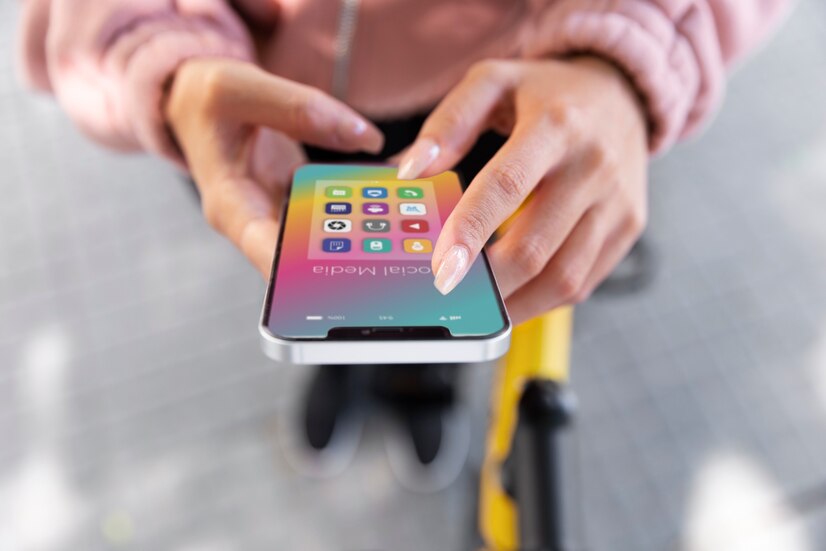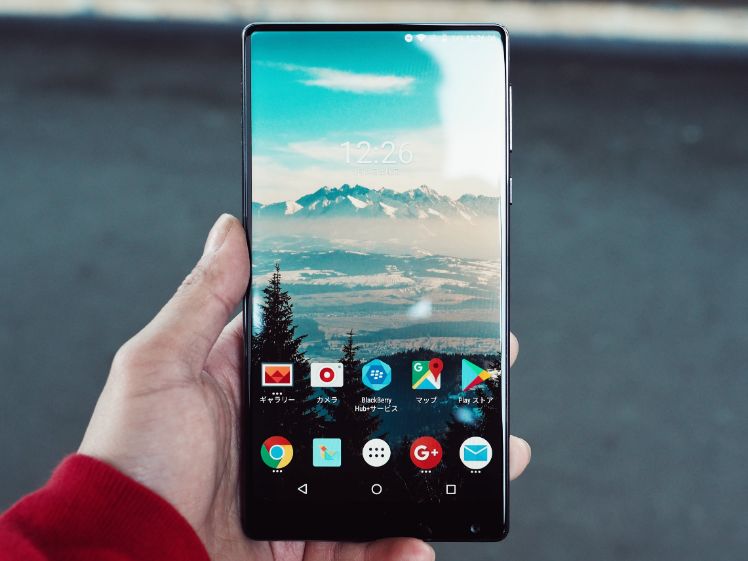In the fast-growing market of e-commerce businesses, every popular online store is betting on an e-commerce app as an extension to its website.
Therefore, as an online retailer, it’s almost indispensable having a mobile app for pursuing further growth and sales.
The popular transformation of brick and mortar to click and mortar has slightly moved and adapted itself to an even more personalised shopping experience. Thanks to e-commerce apps, online stores can respond better to the needs and preferences of their customers. But why are these apps so popular among end-users in the first place?
You might be interested | Maximizing Mobile Success: 12 Profitable App Business Models Explored
The popularity of e-commerce apps
According to a survey from Clutch, the top four reasons for consumers to use e-commerce apps are as follows:
- To receive deals and offers (68%)
- Flexibility to buy at any time (64%)
- Compare products and prices (62%)
- Save time at the store (54%)
Besides these four main reasons, consumers tend to use e-commerce apps to see a broader range of products (53%), avoid going to the store (47%), and have the possibility to choose where and when they want to receive their order (27%).
Considering these numbers, a new question emerges: isn’t a responsive website enough to adapt to the current trends in the e-commerce industry? Keep reading to find out!

Why should I create an app for my e-commerce business?
Firstly, we will cover the advantages retailers can have by creating an app for their online business. Let’s start with, in our opinion, the most important one.
Brand loyalty
Creating brand loyalty can be one of the reasons for an online store to develop a mobile app. This with the aim to make the connection between online stores and customers stronger.
How? By offering deals and exclusive discounts for installing the app. Mobile shoppers are encouraged to make an actual purchase by personalised and engaging experiences like receiving one-time offers.
But why is brand loyalty so important? According to data provided by Adobe, 67% of online shoppers who use their mobile phone to make purchases prefer to use apps provided by their favourite brands. By driving higher user engagement and enhanced usability, you can reinforce the loyalty of customers to your brand.
Higher quality content
We all know that customers hate slow websites. If loading a webpage takes more than three seconds, 42% of the visitors will decide to visit another one which is faster.
Creating an app for your online store enables you to show content in a faster, more attractive, and more user-friendly way. Besides, most e-commerce apps don’t even need an internet connection for the basic functionalities to work. Unlike websites, they always need an internet connection to load and update every piece of content.
According to a study by Flurry Analytics, 90% of the time that smartphone users are spending on their mobile is used to interact with applications. On top of that, 79% of the smartphone users have one or more e-commerce apps on their device and 10% even have six online retailer apps.

Advanced marketing strategies
The popularity of e-commerce apps keeps rising because of strong marketing strategies. Zara for example, recently launched an app to offer their customers a different shopping experience with the implementation of Augmented Reality. By downloading the app and pointing the camera at a mannequin in a Zara store or to the screen of your e-commerce purchase, the clothing will come to life on a model for a few seconds. According to the fashion brand itself, they want to encourage users to take photos of the holograms and share them on social media.
But Zara is not the first one to come up with innovative marketing ideas for mobile e-commerce apps. Asos has taken the term shop the look to a higher level. In their mobile app for Android and iOS, there is a little camera button. When you click on it you can add a photo of an outfit you like and Asos will take care of finding similar items on their website. The reverse image search helps you to easily find a complete outfit and therefore changes the customer’s shopping experience.
A more traditional strategy among outstanding e-commerce apps is to use push notifications. Sending personalised messages, using the right words, and communicating it at the right time can boost your sales instantly. During the last three years, the number of push messages has grown and are considered less annoying than before. In addition, with the implementation of beacons, it’s even possible to detect when a device is near to a specific store. Based on the location of the user, the app can send personalised push notifications including special offers that are only available at the store nearby.
You might be interested | What Are The Best Mobile App Marketing Strategies? [2020]

Understanding the functionalities of an e-commerce app
Besides being aware of the possible advantages of creating an e-commerce app it is important to understand the basic functionalities that can be implemented in such an application. To explain this as simply as possible we are going to take a deeper look at the application of the Swedish multinational Hennes & Mauritz.
The basics
From our experience as app development specialists, we know that the technical aspects of an application are not always easy to understand. Therefore we listed the basic functionalities of the H&M app in order to find out what every aspect is used for.
- Admin panel. This is basically the access account for the owner of the e-commerce business, that can be used (preferably on a desktop) to easily add products to the catalogue, monitor orders, automate discounts etc.
2. User login. In order to make in-app purchases, add a payment method, or add reviews to products, a customer login is required. H&M asks to enter your email and password to get access to a personal account. Another option is to add the option to log in with a social media account like Facebook.
3. Product catalogue. This contains an overview of all your products. The H&M app divided the items into categories and subcategories to keep it organised.

4. Search bar. To make it easier for customers to find the product they are looking for, it’s recommendable to add a search bar. H&M also added the possibility to scan the barcode or take a picture of the product in the store to get access to information like: how many items, in which colours, and in which sizes the product is still available.
5. Shopping cart. In the H&M app, this functionality is called “Shopping Bag”. It enables users to add products to a digital shopping cart/bag and pay for all items at once. The customer simply has to click on the option “add to shopping bag” and choose the size (if necessary). The items can easily be added or removed from the Shopping Bag.
6. Orders and in-app payments. The whole concept of an e-commerce app is eventually relying on the possibility to place an order and pay for it through the app. The H&M app offers the option to pay by card, by PayPal, by invoice -within 20 days, pay next month or by a gift card. Customers also have the choice of having the package delivered to a different address, a post office, or an H&M store.
7. Privacy & Security. Because of the new GDPR for mobile apps, short for General Data Protection Regulation, every app is obliged to communicate which data of the user is collected, why, and what it will be used for. This is extremely important to keep in mind because of the fines that can be received when not complying with the regulation. The H&M app asks for approval of its privacy and security policy right after you download and start using it.

Extra functionalities
Besides the most common functionalities of an e-commerce app, H&M decided to add the following options:
- Push notifications: to send personalised messages and offers.
- Beacons: to personalise push notifications even better to the customer by offering exclusive deals.
- My favourites: The possibility to add products to this list.
- Magazine: An in-app blog to read about the latest fashion trends.
- Store locator: To easily find a brick and mortar store nearby.
- H&M Club: The option to create an H&M club member account to get a 10% discount when you join, unlimited free delivery, earn points on all purchases and get exclusive discounts.
These are all examples of creating customer loyalty and engagement that are optional, but recommendable to boost your sales!

Wrapping up
Creating a mobile application is a fundamental step for e-commerce business owners. A responsive website is only enough during the test phase of the project to make sure it has sufficient potential to succeed.
In order to distinguish your online store from the rest and increase your sales, it’s necessary to give your customers the shopping experience they want.
Do you want to create an epic and well-designed mobile app for your online store? Don’t hesitate to get in touch with our Yeeply team. We are happy to help you!








